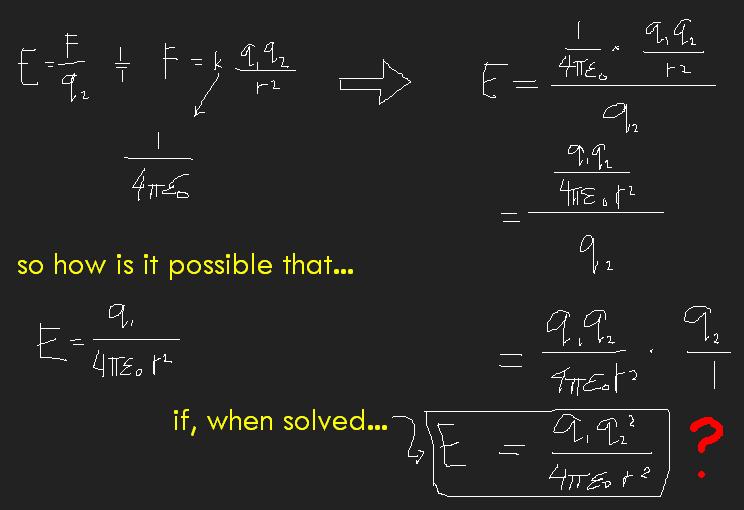|
electricity
|
|
sorry, i am currently preparing for exams and have several questions to ask... 1. what is the difference between a.c. generator and d.c. motor? 2. why is it that in d.c. circuit when u increase the resistance, the voltage increase and the current decrease and the power loss increases yet in a.c. circuit, the power loss decreases when u increase the voltage?? hope u guys can help me out... thank you.. |
|
Re: electricity
Link |
by MiCHiYo μ
on 2006-10-26 06:43:15 (edited 2006-10-28 04:22:39)
|
|
Wow~ What coincidence. I'm studying for my test as well. Anyhow... 1. An a.c. generator gives and receives current, while a d.c. motor just goes one way. (that's what my teacher told me) 2. Think of it this way: you have a hall full of students and only one emergency fire exit. A smoke bomb exploded on the other end, and the exit has been opened. More students (voltage) tries to get through the exit (resistance) but it's really tight. Open another door (ergo, more resistance), more students will get to flow, so it's not as tight. >< I hope I answered your question... Oh, yeah. I now throw a question to gendou about the same topic: (if my mouse-handwriting is not understandable, I will soon post one that should be a tad bit more clearer than this one. ^________^)  -michiyo- 
beware. the QueeN oF SiGGieS is here. kill that mr. scrolly or your siggy goes BAI BAI. it's solidarity month! let's be united! +[-- GeNDouNiaNS: i am half-back! visit my blog by clicking on the siggie banner! updated: 12.07.07 --]+
~*..:: i'm never going to give up... if i do, then it wasn't worth trying. ::..*~
|
|
Re: electricity
Link |
by
|
|
michiyo, i await your electromagnetism question :) anyway, good answers, but i will add my own, too: 1. if you had asked about a DC motor vs DC generator; nothing. spin a little electric motor with your fingers, like the kind you get out of a VCR, and you can power a small LED. (one of my favorite experiments as a kid) 2. what michiyo said :P 


|
|
Re: electricity
Link |
by SuicidopoliS
on 2006-10-28 04:04:37
|
|
Well, i've got a question for you: suppose you have a small disc, with it's origin a (0,0,0), radius R, and total charge Q uniformly spread accros the surface. How do you express the potential for r > R and r < R ( r is arbitrary, and by no means restricted to the x-y plane ) in Legendre polynomials??? .oO° Life's THE CURE, the rest are details! °Oo. |
|
Re: electricity
|
|
@ michiyo: sorry, i still don't get what u are trying to say... is the student and the exits thing referring to the d.c. or a.c.?? and what does the tight refers to ? the current? the voltage? or? and regarding your question, sorry, i'm of no help here... i'm still studying the basic physics which is already killing me... |
|
Re: electricity
Link |
by MiCHiYo μ
on 2006-10-28 05:09:20 (edited 2006-10-28 07:07:57)
|
|
aLi hmm~ And I thought I explained it well enough. ehehe~ Owkiedowkie. Here goes. The student and exit thingy is my answer to your number 2 question. If you look back up there, I've numbered them. Anyhow, the tight thingy is just how the voltage flows. What I'm trying to say is, just imagine that the students are the voltage, the exits are the resistance. The more resistance, the higher the voltage, the lesser the current. If you still can't imagine that, grab a bag, fill it with water and poke a hole. Imagine that the water is the voltage. It tries to get out of the bag as fast as it could through the hole you've poked, but because this hole is only one and is small, it can't get out fast. This hole represents the resistance. The current will stay constant, but when you poke another hole, the current becomes more as the voltage decreases because now you have a lesser resistance. I hope I'm not confusing you... >< By the way, the DC motor looks something like this (click on the pic to get more explanation):  If you're STILL confused, just ask away! =D SuiCiDoPoLiS woah~ Your question sounds like a Maths question... T_T Sorry... I don't think my powers can reach that height. Let's wait for Gendou, shall we? ^__^ -michiyo- 
beware. the QueeN oF SiGGieS is here. kill that mr. scrolly or your siggy goes BAI BAI. it's solidarity month! let's be united! +[-- GeNDouNiaNS: i am half-back! visit my blog by clicking on the siggie banner! updated: 12.07.07 --]+
~*..:: i'm never going to give up... if i do, then it wasn't worth trying. ::..*~
|
|
Re: electricity
Link |
by SuicidopoliS
on 2006-10-28 05:13:57
|
|
@Michiyo: you made a simple calculus mistake. At the right of your big rightarrow you wrote ( i'll use e as "epsilon_0" ): "E = [ (1/4 Pi e) * ( q1q2/r² ) ] / q2" Which you then, 2 steps further, state to be equal to: "E = [ q1*q2*q2 / 4 * Pi * e * r² ]" That is a false statement! You "lifted" the q2 in the denominator of the fraction in your previous step up to the numerator of the fraction in the next step. That's incorrect, it should be left in the denominator, at which point the q2 in the numerator cancels the one in the denominator, which gives you back the expression you started with in the first place... ( a/b )/( c/d ) is not the same as ( which is what you are doing )(a*c / b*d), but is equal to (a*d / b*c)... .oO° Life's THE CURE, the rest are details! °Oo. |
|
Re: electricity
Link |
by MiCHiYo μ
on 2006-10-28 07:05:36 (edited 2006-10-28 07:07:26)
|
|
SuiCiDoPoLiS waaaaaaaaaaaaaaaaaaaaaah~ *confused* woah~ You know what, I owe you BIG TIME. I didn't see that until you actually pointed it out! T_T Thanks a bagadillion Suicidopolis! *buggie huggie* ---OKAY. Way too informal. You know, this is one big reason why I end up flunking my Maths tests. I'd get the process and everything else right, but thanks to my carelessness, things get flipped around (like negative signs gets forgotten, compound division gets jumbled up like that one) and puts me in deep trouble. Boy am I glad I posted that one. ^____________^ Unfortunately, I can't give anything in return to you because I don't understand your question. I guess we'll really just have to wait for Gendou. Thank you so ube much for your help again! >< -michiyo- 
beware. the QueeN oF SiGGieS is here. kill that mr. scrolly or your siggy goes BAI BAI. it's solidarity month! let's be united! +[-- GeNDouNiaNS: i am half-back! visit my blog by clicking on the siggie banner! updated: 12.07.07 --]+
~*..:: i'm never going to give up... if i do, then it wasn't worth trying. ::..*~
|
|
Re: electricity
|
| thanks, i get it now... thank you so much.... |
|
Re: electricity
|
|
Hm, suicidopolis, are you sure that disc problem of yours can be solved for all points in space? At first glance, I'd think it only has analytical solution in the z-axis and the x-y plane (for the disc laying in the x-y plane)... But darn, I'm so screwed up in Electromagnetism I just might do this problem of yours.
"From East Middle School, Suzumiya Haruhi.
I'm have no interest in ordinary humans. If there are any aliens, time travelers, sliders or espers here, then come join me."
|
|
Re: electricity
Link |
by SuicidopoliS
on 2006-11-14 01:09:14
|
|
Yeah, it's possible. I did it using the generating function for Legendre Polynomials, which looks something like Formula (1) ( the first one on top of the page... ) on => this <= page. If you're really interested, i can give you the solution... or do you prefer breaking your head over it yourself first? I can tell you it's a damn m*f*... Let me tell you already you have the choice of either writing down a general solution, in which case you'll end up with an integral ( which of course you can solve, but... it'll take you a week of total exclusion and no food-no sleep in some cave outside of the ordinary world... "why don't you use Mathematica?" Be my guest! ), or you can choose to write down an approximation using Taylor expansion ( i don't like Taylor... even if the guy keeps popping everywhere in Physics ). .oO° Life's THE CURE, the rest are details! °Oo. |
